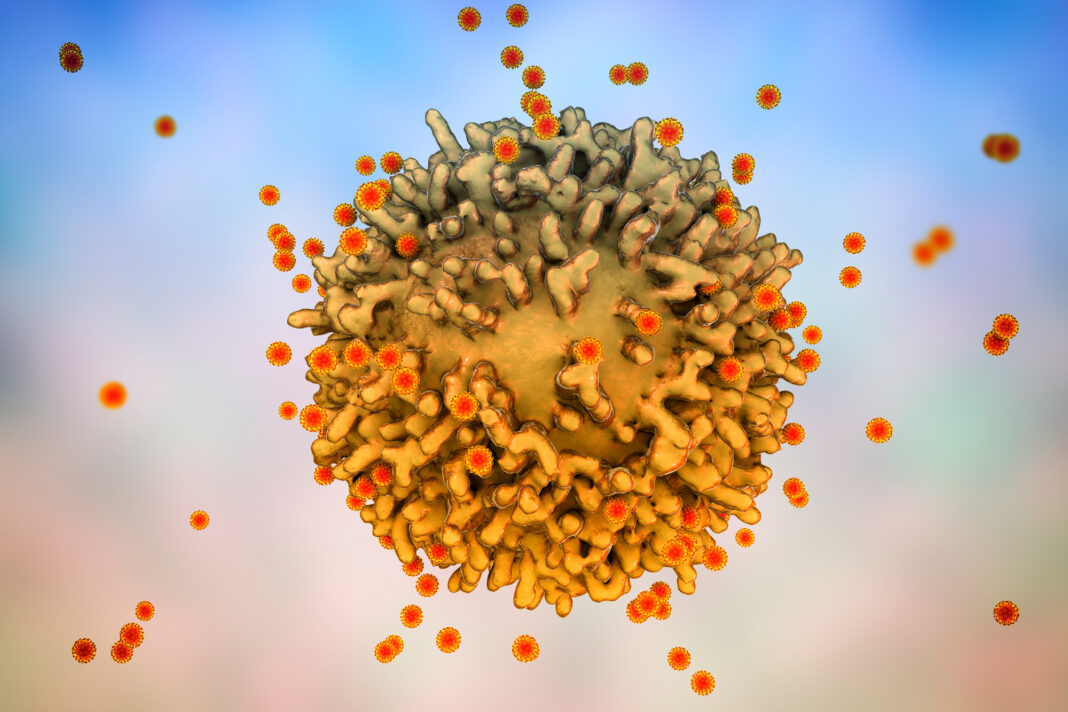Throughout the COVID-19 pandemic, children have been more protected from infection of SARS-CoV-2 than adults. Children have had a reduced risk not only of developing severe COVID-19 but also of being infected by SARS-CoV-2 in the first place. However, little is known about the molecular mechanisms that might be responsible for this protection. In order to close the gap in this understanding, researchers compared the single-cell transcriptional landscape of the upper airways of adults and children. The results suggest that the airway immune cells of children are primed for virus sensing, resulting in a stronger early innate antiviral response to SARS-CoV-2 infection than in adults. These findings may take us one step closer to understanding why children have a higher capacity for controlling the initial stages of SARS-CoV-2 infection than adults.
This research is published in Nature Biotechnology in the paper, “Pre-activated antiviral innate immunity in the upper airways controls early SARS-CoV-2 infection in children.”
A team of researchers investigated how the expression of genes in cells of the upper airways of patients with COVID-19 might vary between adults and children. Using single-cell RNA sequencing (scRNA-seq), the team characterized the upper airways of 45 patients who tested positive for SARS-CoV-2, of whom 24 were children (median age of 9 years; 10 female, 14 male) and 21 were adults (median age of 39 years; 12 female, 9 male). These were compared with samples from a control group of 42 healthy individuals who tested negative for SARS-CoV-2, of whom 18 were children and 23 were adults.

The scRNA-seq data revealed that the children had higher baseline levels of certain RNA-sensing receptors that are relevant to SARS-CoV-2 detection—such as MDA5 and RIG-I—in the epithelial and immune cells of their noses. This differential expression resulted in stronger early immune responses to SARS-CoV-2 infection in children than in adults. The nasal samples from these children were also more likely to possess distinct subpopulations of T cells — for example, KLRC1 cytotoxic T cells, involved in fighting infection, and memory CD8+ T cells, associated with the development of long-lasting immunity.
These findings, according to Roland Eils, PhD, founding director of the Center for Digital Health at Berlin Institute of Health, illustrate that “children are effectively counteracting SARS-CoV-2 infection by pre-activation of pattern recognition receptors that are a first means of defense of the innate immune system.”

The researchers, Eils noted, expected to see marked differences in the antiviral capacity between infected children and adults. But, they were surprised to see that the activation of the antiviral defense mechanisms of the innate immune system were already observable in healthy children prior to infection. This pre-activation in healthy children helps them to immediately counteract SARS-CoV-2 infection, he asserted.
“In contrast to earlier COVID-19 studies (including our own) which identified factors and mechanisms that contribute to severe COVID-19,” noted Eils, “the present study allows us to identify highly effective protective mechanisms from our study in children.” It is tempting, he added, to speculate that activation of those protective mechanisms could be an attractive avenue to follow to develop preventive measures against SARS-CoV-2 infection.



